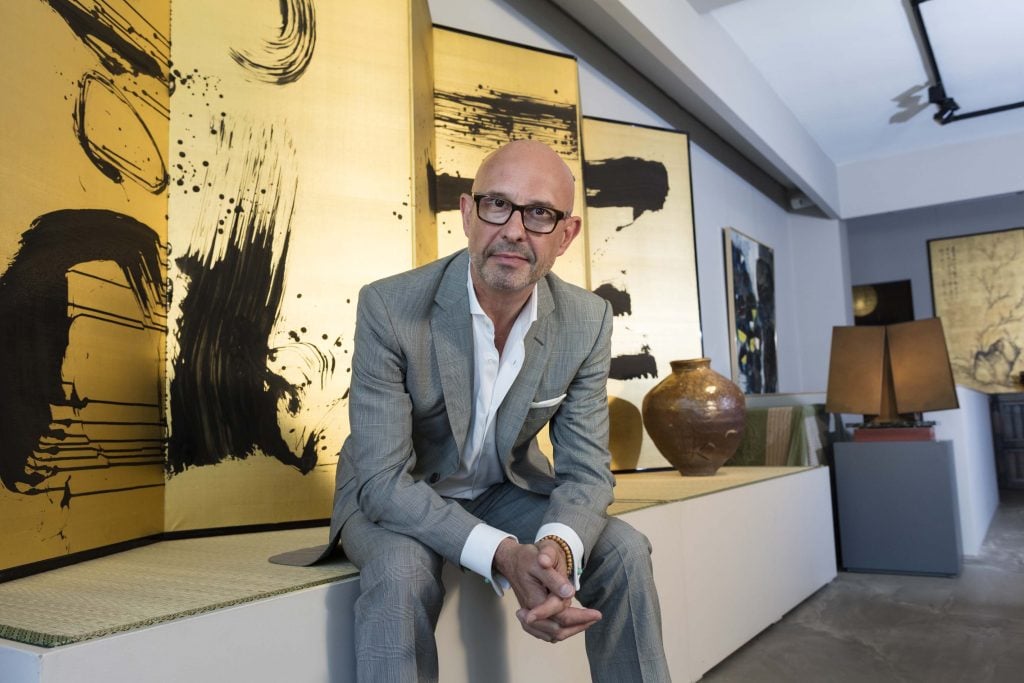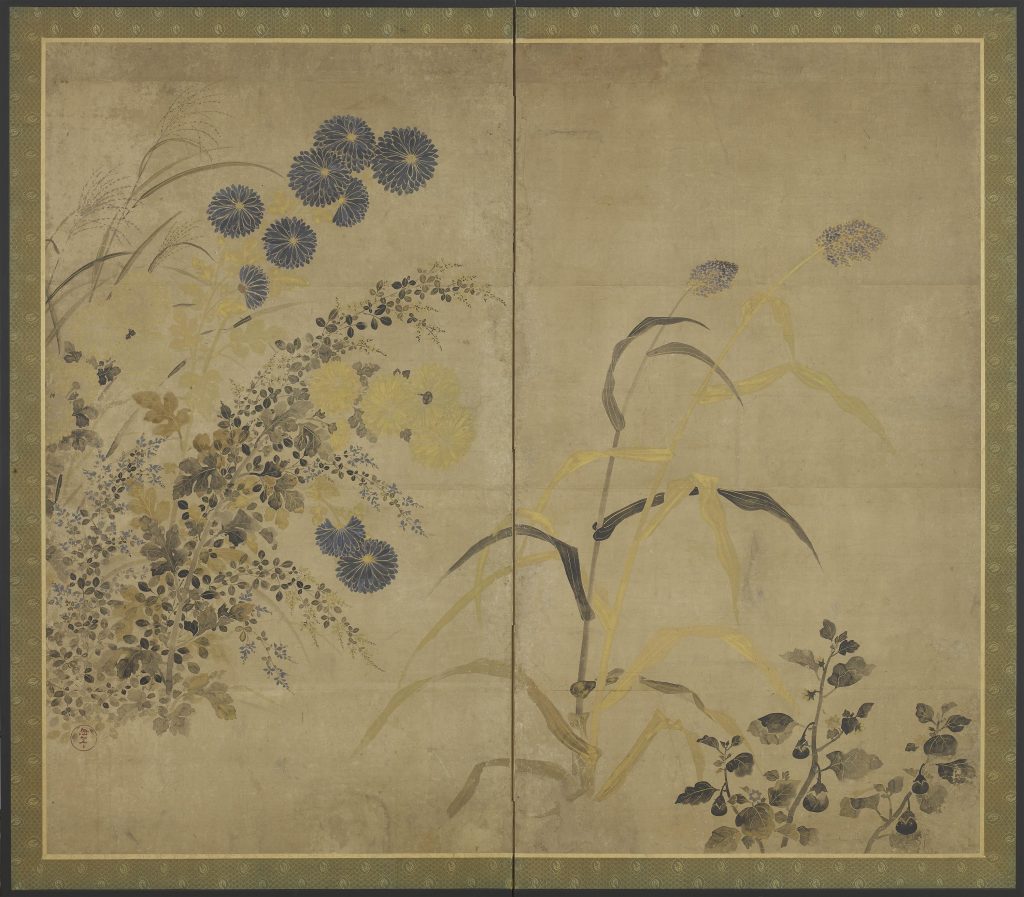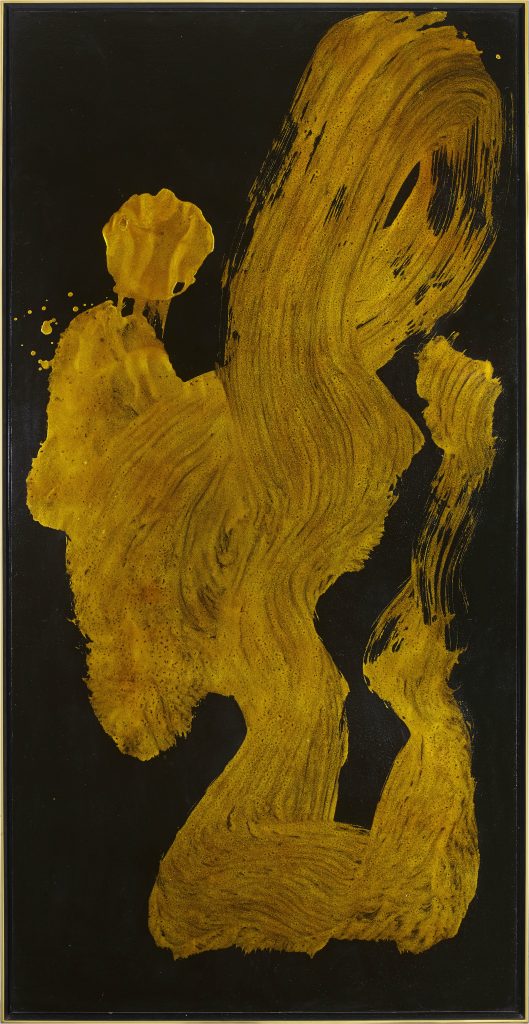Longtime London Dealer Gregg Baker on Relocating to Brussels and His Lifelong Passion for Japanese Art


Artnet Gallery Network

Gregg Baker, a longtime dealer of Asian art, has had a surprisingly eventful year. In the midst of the pandemic, Baker moved his gallery—which has been in London since 1985—to Brussels.
Over the past 35 years, the gallerist has established himself as one of the leading Western experts on Japanese art—success earned, he says, through a combination of hard work and luck. So what’s next for the veteran dealer who has just arrived in his new city?
We recently caught up with Baker, who, in the midst of unpacking for the gallery’s debut early next year, told us about his plans for the future and why educating clients about Japanese art is the passion of a lifetime.
You’re one of the most trusted Western dealers of Asian art. Can you tell us how you first become interested in Japanese art?
During my few years working at Christie’s London, I viewed auctions on a daily basis. My eyes were drawn to Impressionist paintings and Art Nouveau. This led me to Japanese art, which was the main influence for both movements. Then, in 1981, the Royal Academy London held “The Great Japan Exhibition” and although I was already interested and dealing in Japanese art, this opened my eyes to the true beauty of pieces produced by this special country.
Why did you decide to start a gallery rather than stay in the auction world?
It was more luck than anything else. I lived in Japan in the early 1980s and upon my return, a well-established dealer in Japanese art, John Crichton, was looking for someone to share his shop in Mayfair, London. Let’s just say he made me an offer I couldn’t refuse. The rest is history! I guess the most valuable thing I’ve learned in the last 35 years is that you can have all the knowledge in the world, but without a little bit of luck, it is of no use to you.

Kokuta Suda, Untitled (1961). Courtesy of Gregg Baker Asian Art.
Are there any artworks it has been particularly hard to part with?
How much space do we have? For a dealer, it is very often difficult to part with loved pieces. These are not always the most expensive objects, in fact, it can sometimes be something which is far from obvious but the piece has touched you at a deep level and you never forget every detail.
You also take an interest in educating students and the public about Japanese art. Can you tell me more about how that relates to your gallery and its goals?
From my rather humble routes, I’m very proud that the likes of SOAS, Christie’s, and Sotheby’s now ask me to talk to their students and impart what insights I have. The sharing of knowledge and giving those interested the chance to get close to and handle pieces is imperative. This is the only way to learn about art and it is a tradition which in my opinion can not be continued in any other way.
The more I travel to Japan and learn about its art and culture, the more I want to attempt to bring a small part of this experience to my clients when visiting my gallery.

A two-fold paper screen painted in gold, silver, and ink on a buff ground depicting an autumnal scene with kiku (chrysanthemum), hagi (bush clover), susuki (pampas grass), morokoshi (sorghum) and nasu (aubergine. Rimpa School, Japan, 17th century, Edo period. Courtesy of Gregg Baker Asian Art.
What advice would you give a first-time collector?
Find a dealer you feel comfortable with and let them share their knowledge with you. Take your time, buy from your heart, and buy the best you can possibly afford.
Can you pick one work from your inventory that you’re particularly fascinated with right now and tell us why?
I’m particularly drawn to a delicate two-fold screen from the 17th century. It is from the Rimpa School, which was founded in the early 1600s by Tawaraya Sotatsu. Most screens are painted onto a gold leaf ground with ink and colors. However, this particular screen is on a plain paper ground and the painting is in ink with the highlights and details painted in a gold and silver wash. These soft tones optimize the subtleties of the late autumn scene, of chrysanthemums and grasses which it depicts. It’s the first time to come across this inverted style and it is wonderfully understated.
The gallery also deals in post-war Japanese art. Who are some of the artists of that generation you think people should know?
In recent years, there has been a great resurgence in interest in Japanese artists from the middle of the last century and I have been fortunate enough to be involved in this trend for some years. I particularly like Inoue Yuichi and Morita Shiryu who founded the Bokujinkai group of avant-garde calligraphers, and my personal favorite, Suda Kokuta, who worked closely with both of these artists. Suda Kokuta was a master calligrapher and also painted bold, powerful abstracts, created with thick oil-based gesso, giving a ceramic-like quality to his canvases. I’ve been dealing in Buddhist art for many years and all three of these artists have a strong connection with Buddhism and Zen in particular. Perhaps this is why I am so inspired by their work.

Morita Shiryū, Ryū (dragon) (1965). Courtesy of Gregg Baker Asian Art.
What changes has the pandemic brought to you and your gallery?
The pandemic has changed many things for all of us. Personally, I have come to realize that it is possible to run my business in a way that I would never have thought possible. That is to say my staff and I have all been working remotely for most of 2020 and it has proved to be very doable. Clients are more and more comfortable buying from bonafide dealers online and although nothing can replace the experience of seeing a work of art in the flesh, we have grown to accept the current situation and are finding ways to adapt.
Why did you decide to move to Brussels?
The move to Brussels is due to many different factors. I have been running a gallery since the mid-’80s and was keen to change the way I work therefore have been looking at alternatives for some time. I wanted a large, well-located space where I could store all my pieces and work by appointment only. Real estate in London and Paris has become very expensive and Brussels is very reasonable by comparison, as well as being perfectly placed between the two. I now have a wonderful 250-square-meter space for a quarter of the cost of my London gallery. I was also concerned about what may happen post-Brexit and as most of my clients are European I wanted to be sure I would remain accessible to them.
The main concept going forward is to present pieces in a home environment, making it a much more personal experience and easier for clients to visualize how things will look once installed in their home.
If you could own any artwork, what would it be and why?
That’s not an easy one but if I had to choose it would be The Garden of Earthly Delights by Hieronymus Bosch. I have always loved this period and style of painting. One can get lost in the details for days, it feels so far ahead of its time and is still completely relevant to man’s struggle to find a middle path between excess and moderation.
If you were not an art dealer, what do you think you would be doing?
In my youth, I had dreams of becoming a chef, so I guess I would be chopping onions!
Learn more about Gregg Baker Asian Art with the Artnet Gallery Network.